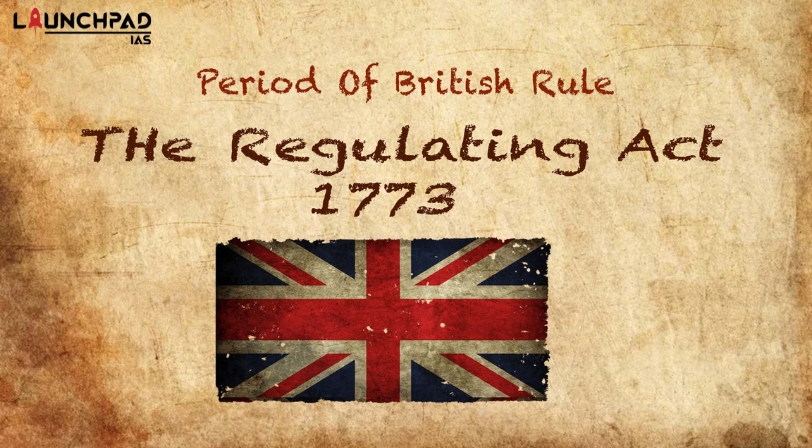About
The Regulating Act of 1773 got Introduced to Establish a Central Administrative System in British India. The act was brought to regulate the activities of the British East India company. It was an initiative of the British parliament to bring an administrative reform in British India.
Main features
- This act permitted the company to retain its territorial possessions in India
- It changed the post of Governor of Bengal to “Governor-General of Bengal”.
- Establishment of Supreme Court in Calcutta
- For the first time, the British cabinet was given the right to exercise control over Indian affairs.
The objective of the Act

Key Provisions of the Act (Major features)
- Introduction of the office of the Governor-General of Bengal: The office of the Governor of Bengal was redesignated as the Office of the Governor of the Presidency of Fort William, also known as Governor-General of Bengal. Lord Warren Hastings was the first person to hold this designation.
- Creation of Executive Council to Assist the Governor-General: the Executive Council of four members was created to assist the Governor-General.
- Governors of Bombay and Madras presidencies subordinate to the Governor-general of Bengal: The Governors of Bombay and Madras were made subordinate to the Governor General of Bengal, thereby making the Governor General of Bengal as the ultimate authority.
- Establishment of the Supreme Court at Judicature at Fort William: In the year 1774, Supreme Court of Judicature at Fort William was established at Calcutta with one Chief Justice and three other judges. The jurisdiction of this court extended to all areas lying under the Bombay, Madras and Bengal Presidency.
- Reforms to curb corruptions: This act brought prohibition on the servants of the company from engaging in any private trade or accepting bribes and gift from the local people. The directors of the company were to be elected for a period of five years and one-fourth of them used to retire every year. There was no procedure for re-election available.
The Contribution of the Act
- Changes in the structure of the judiciary: This enactment is considered to be a landmark enactment as it brought a lot of dynamic and significant changes in the structure of judiciary in the country.
- Court of Directors (COD): The act brought changes some important changes in the Constitution of Court of Directors (COD)
- For the first time, the political and administrative functions of the company were recognized.
- This act also laid down the foundation of the Central Administration in the country.
- This act created for the first time the Supreme Court at Calcutta thereby, making a proper judicial system and Judiciary got regulated to an extent and for the first time learned judges from England were made part of the Supreme Court in India.
Defects in the Regulating Act 1773
- The act rendered the Governor-General without any veto power. He was overruled most of the time by the majority decision of the members of his council. He was responsible for all his acts to the court of directors and answerable for the administrative decisions taken in India.
- Debilitation of administration: The governors of Bombay and Madras presidencies were subordinate and ultimate powers were laid in the governor’s hands. It led to debilitation of administration at subordinate levels and persistence of corruption.
- Lack of division of powers: The provisions regarding the powers and jurisdictional issue of the supreme court at Fort Williams were vague and defective. It did not specify the division of powers of the governor-general and the supreme court. Company officials’ conduct was under the Supreme Court’s purview, resulting in tensions between the governor-general and the apex court.
- The act was silent on the status or concern of people of India who were paying revenue to the East Indian Company.
- The parliament was ineffective in scrutinizing the reports sent by the governor-general.


